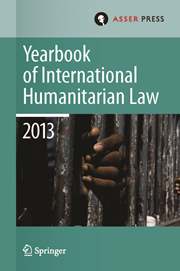No CrossRef data available.
Article contents
BLURRING THE LINES: THE INTERPRETATION, DISCOURSE AND APPLICATION OF THE LAW OF ARMED CONFLICT*
Published online by Cambridge University Press: 02 November 2010
Abstract
Despite the high density and sheer volume of the Law of Armed Conflict (LOAC), there is considerable indeterminacy within its structure. Understanding the interpretive space generated through the rules/standards dichotomy as well as through the policy/law interface resident within this indeterminacy permits greater appreciation of how LOAC is used to advance strategic goals. The purpose of this article is to examine various interpretive approaches to LOAC and to reveal the significance of such approaches to questions of both legal validity and broader considerations of legitimacy. Positivism remains the dominant interpretive idiom, but it contains vulnerabilities in its assumptions, not least is the wide malleability of language. In the current operating environment, within the counter-insurgency (COIN) context in particular, it is becoming evident that standard canons of LOAC interpretation may not be sufficient to achieve the desired military and political goals sought. Indeed recent COIN guidance concerning interpretation of LOAC reflects an approach reminiscent of the US legal realist style of the early to mid 20th century. This results in a more overt demand for greater social and political appreciation of the use of law to modulate violence.
- Type
- Articles
- Information
- Copyright
- Copyright © T.M.C. Asser Instituut and the Authors 2009
References
* © D. Stephens, 2010.


